
The BIG Pick
The Courtney’s of Whimple ‘Cider Orchard’ is open for one weekend in September. Apple picking, pressing, music and much more
Tell me moreA Drop Fell on the Apple Tree
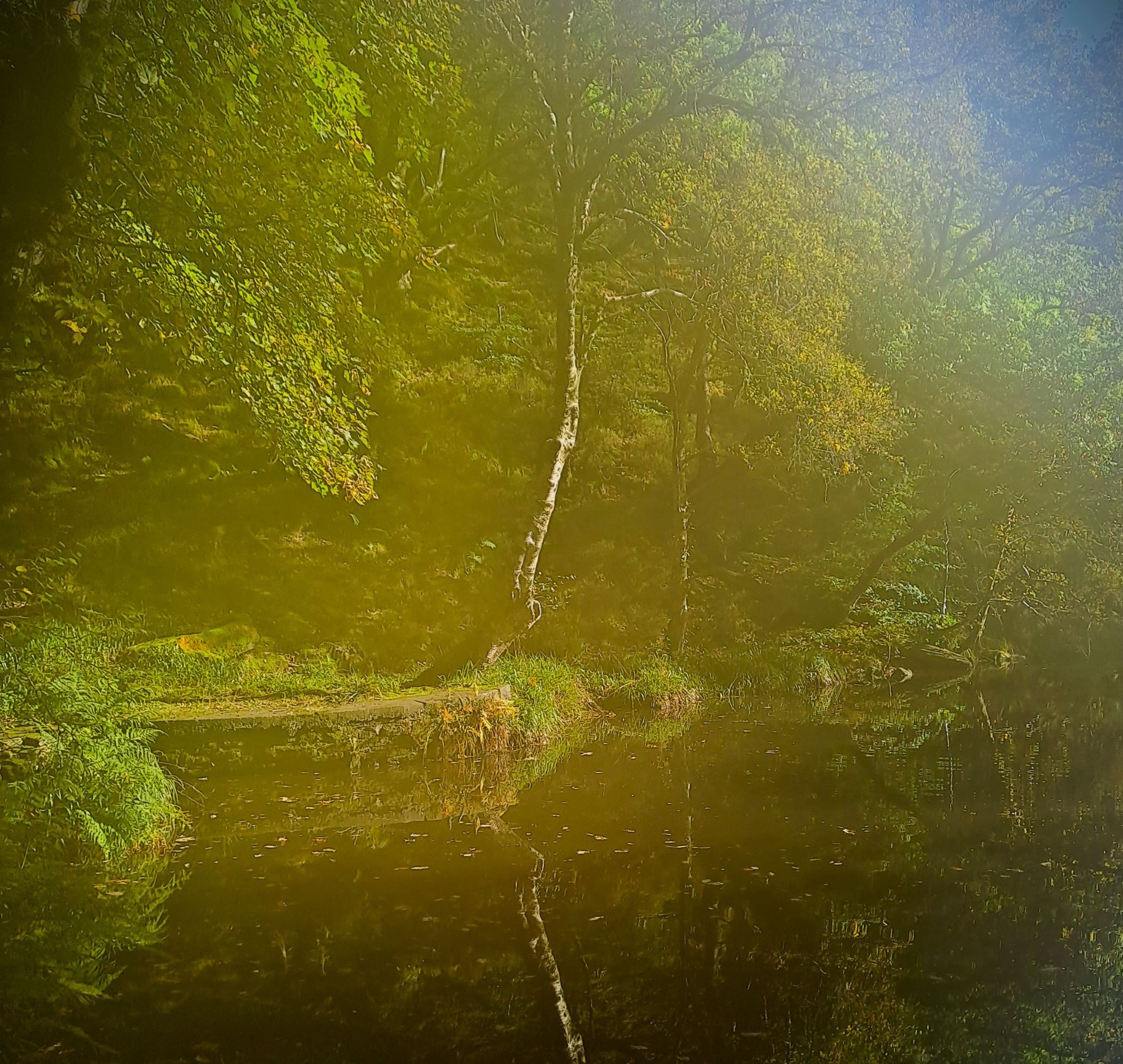
A Drop fell on the Apple Tree -
Another - on the Roof -
A Half a Dozen kissed the Eaves -
And made the Gables laugh -
A few went out to help the Brook
That went to help the Sea -
Myself Conjectured were they Pearls -
What Necklaces could be -
The Dust replaced, in Hoisted Roads -
The Birds jocoser sung -
The Sunshine threw his Hat away -
The Bushes - spangles flung -
Let’s ignore the fact that this is technically a poem about summer showers. Rain persists, even in the latter stages of November. I like Emily Dickinson. So, I’m going to make this a poem about autumn turning into winter, because why not? (Because it’s not. It’s about summer showers. Please don’t let my shoehorn poetry habits mislead you!)
It’s very hard to remember, when sitting in the middle of three days of drudging damp rain, how exciting it is when those first drops fall when you’re least expecting them. There’s a skylight in my attic and one of the things I love to do is go and sit up there (in amongst a lot of stuff that really needs to be sorted through) and listen to the drops of rain falling on my head, while I stay lovely and dry!
How special is it that Emily Dickinson felt the same way!
I know, it’s a very common thing that lots of people like, but it’s still cool!
So, my dear Emily,
The apple trees will grow well, because the drops falling on them have fallen into a downpour.
The hundreds of thousands of raindrops that followed soon after are definitely helping the stream! It’s running a torrent outside right now, but it’s nice to think about that random little raindrop that’s trying to fall on my head, eventually rolling out to the sea. Lots of adventures await it, I’m sure.
Do you think they are pearls of wisdom, falling from the sky? That wisdom is most certainly to stay inside, or invest in a better raincoat! Pearls make sense, Emily. I can see where you’re coming from. The luminescence of a raindrop, with all the colours of the rainbow potentially trapped within it, just waiting to escape with a ray of sunlight… which is most assuredly trapped behind a cloud at this moment, but I suppose you were writing about a summer shower.
I could make you several thousand necklaces, if you like. As you said, the drops are spangling the bushes so much that it look like fairy lights are being thrown from every bush around. How many necklaces should I make you? I’m inclined to say ‘all’. It would not do to let that image go to waste.
As I say, I am writing this as autumn turns to winter. The singing birds are robins, the dust never has time to settle between the storms and the sunshine has most definitely thrown his hat away! But he will come again another day, just as the rain will go away. There are advantages to writing to you at this time of year, though, since the pearls that have captured my imagination so are beginning to seem more solid on the leaves. So much easier to turn jeweller in those circumstances. I will send them to you, from the tips of my fingers.
I hope you are keeping well in the ether. You are alive and well on the page.
Pub Quiz 6
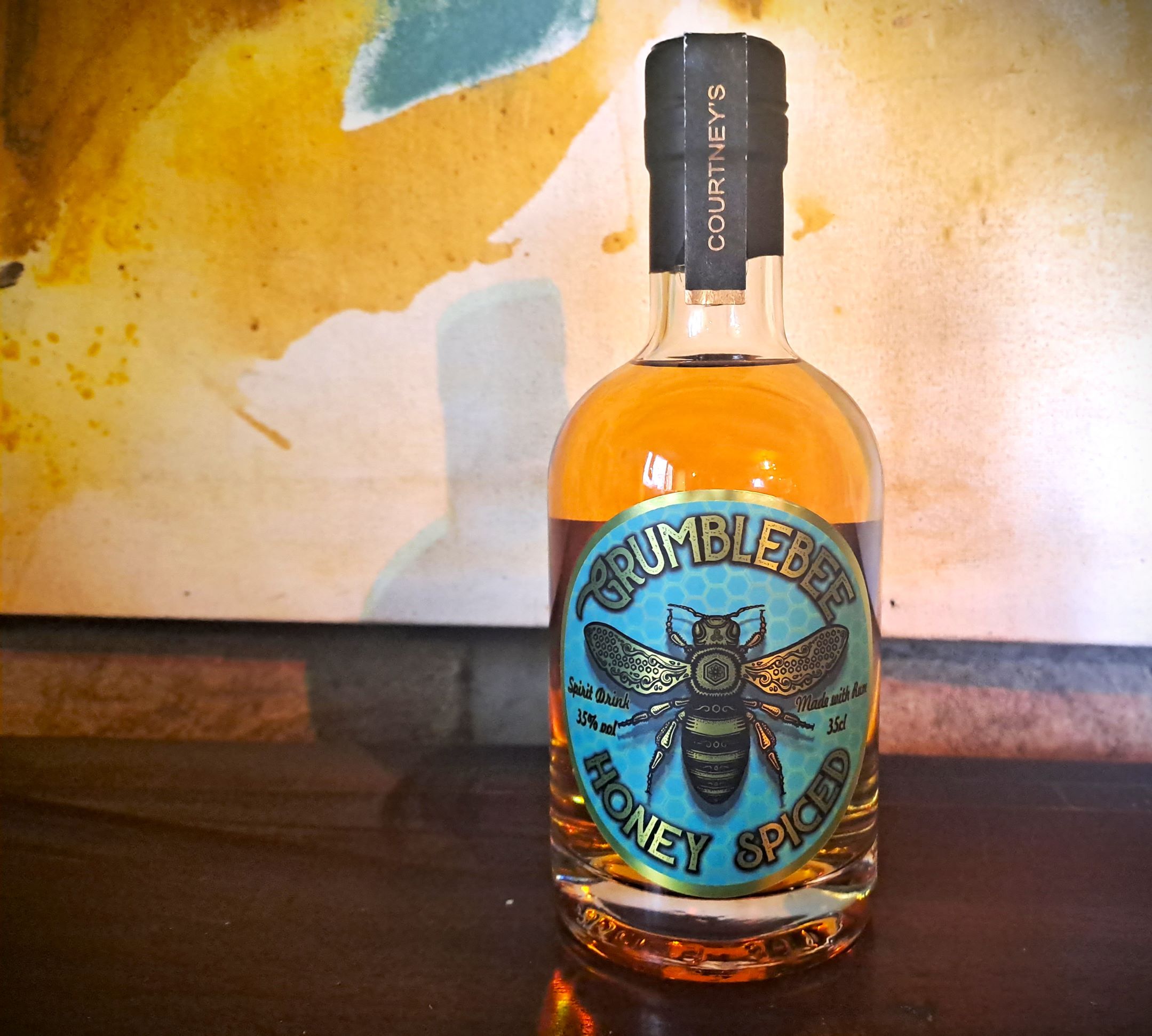
- How old is an apple tree before it bears its first fruit?
- 2-3 years
- 3-4 years
- 4-5 years
- 5-6 years
- Which Roman Emperor (or more likely his army) took cider back to Rome after invading Britain?
- Julius Caesar
- Claudius
- Vespasian
- Agricola
- In the British Navy, a daily ration of rum was introduced in 1655. When was it abolished?
- 1900
- 1920
- 1950
- 1970
- It’s coming to the end of foraging season. What colour is sloe gin?
- Clear
- Dark red
- Bright blue
- Deep orange
(Answer: c) 4-5 years.)
(Answer: a) Julius Caesar. When Julius Caesar invaded Britain in 55BC, he and his army found the Celts making a drink out of fermented apples. They liked it as a drink and took it back to Rome as a better alternative to wine than beer)
(Answer: d) 1970!)
(Answer: b) dark red and delicious looking)
Apple Tiramisu
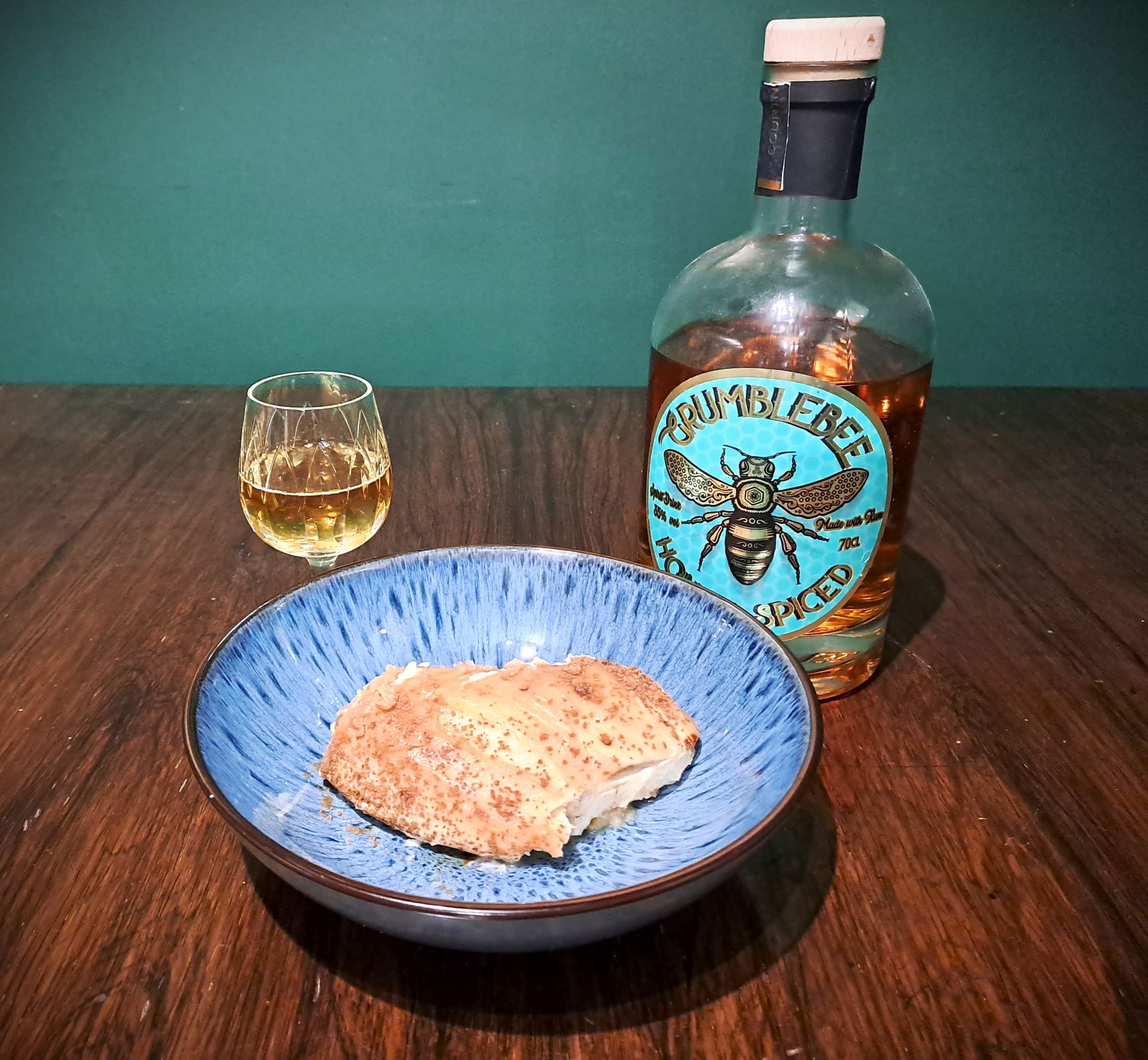
Tiramisu is the perfect dessert and I will physically fight anyone who tells me otherwise. You have cake (technically ladyfinger biscuits, but once they’re soft, it’s basically cake), you’ve got rich mousse, you’ve got whatever you’re topping it off with… actually, it’s not that complicated when I put it like that, but that’s the point: it’s simple, easy to make, and perfect every time.
I’m not a big coffee lover, though, so to change it up a bit and add to perfection (in my opinion) I like to do twists on this classic and so this is my version of an apple (and rum) tiramisu.
Recipe (Serves 8)
- 1 packet Ladyfinger biscuits
- 100ml apple juice
- 2 tbsp Grumblebee Honey Spiced Rum
- 500g Mascarpone cheese
- 75g sugar
- 1 egg yolk
- 200ml double cream
- 1 jar of Apple Curd https://courtneys.online/apple-and-rum-curd/
- 6 tsp Apple Butter (optional) https://courtneys.online/anglo-saxon-apple-butter/
- 100g Rum Caramel (optional)
- 1 tbsp brown sugar
- 1tsp powdered cinnamon
- Mix the mascarpone cheese, sugar, egg yolk, 1tbsp Grumblebee Honey Spiced Rum, Curd and cream into a bowl and beat with a spatula until smooth and soft peaks form.
- Pour the apple juice and 1 tbsp of Grumblebee Honey Spiced Rum into a shallow dish and dip the ladyfinger and lay into a 25x30cm serving dish.
- (optional) Spoon the apple butter over the ladyfingers and spread evenly.
- Spread all the mousse over the ladyfingers, or (if using a smaller dish) use half the mousse and repeat the dipping, lining and spreading process.
- (optional) spread a thin layer of rum caramel (recipe below) over the mousse.
- Mix together the sugar and cinnamon and sprinkle over the dish.
- Put the tiramisu in the fridge for at 12-24 hours.
Serving Suggestion
I served this recently with a liqueur glass of Grumblebee Honey Spiced Rum and my guests were blown away by the combination!
https://courtneys.online/rum/g...
Rum Caramel
- 200g sugar
- 5 tbsp Grumblebee Honey Spiced Rum
- 230ml cream (room temperature)
- 85g butter (cubed and room temperature)
- ½ tsp sea salt
- 1 tsp vanilla extract
Method
- Put the sugar and rum in a heavy bottomed pan and stir over high heat until it is melted. Brush down the pan with water regularly to prevent burning. Stir occasionally.
- When the sugar, rum mix has caramelised into a deep gold colour, add the cream. This will make the mixture bubble violently, so be careful and mix vigorously.
- As soon as the cream has been combined, add the cubed butter and mix in.
- As soon as the butter is melted, remove the pan from heat and add salt and vanilla. Mix.
- Serve.
Sausages with a French Onion Sauce
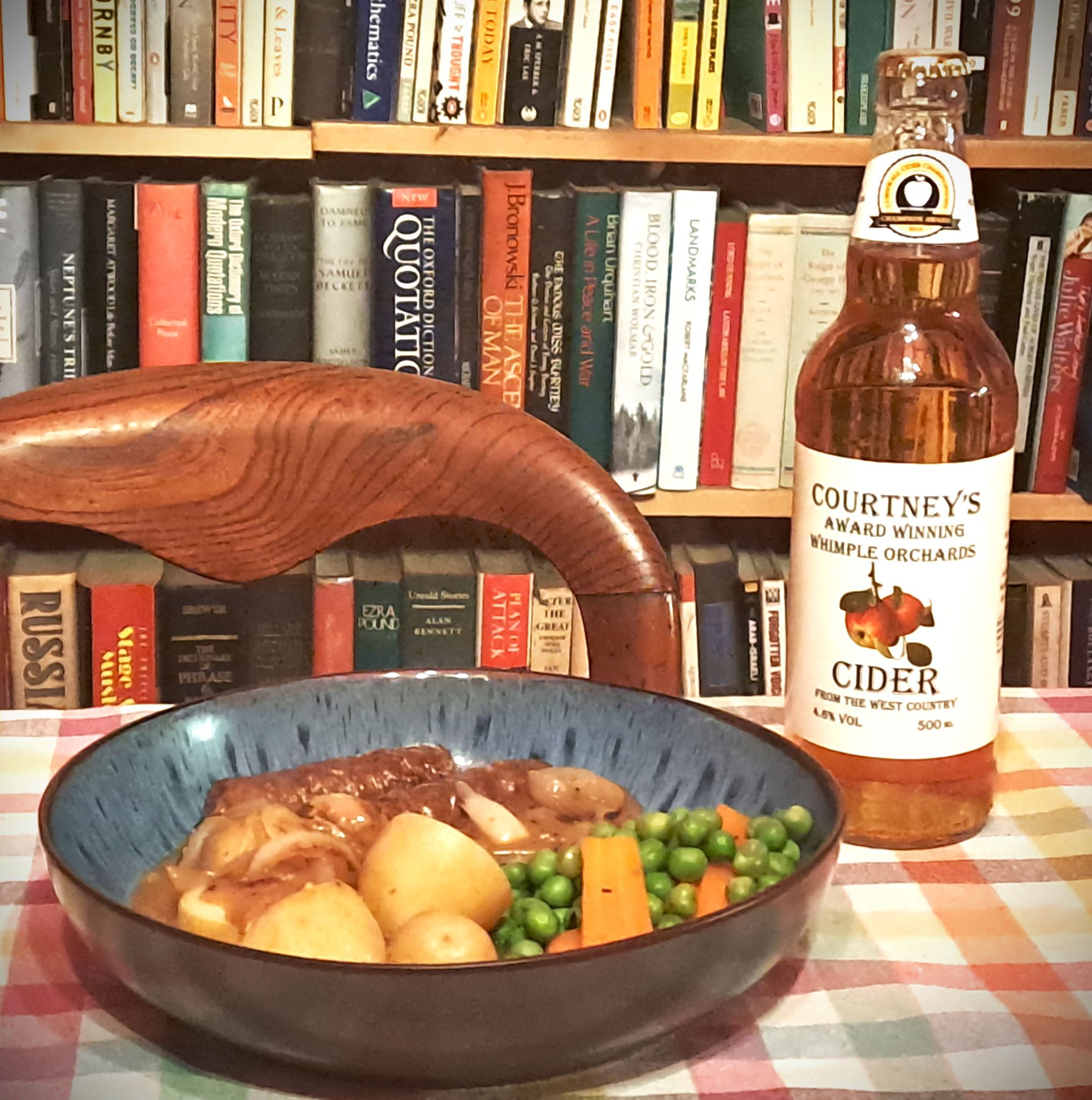
I don’t have very much to say about this recipe. It’s quite simple, but perfect on a foggy, drawn in night and so I thought I would share it with you. The only thing that is remotely ‘complicated’ is the onion sauce, the recipe for which is below.
Cook your sausages (I made beef sausages for the first time for this and they were absolutely delicious and worked really well with the rich onion) in your preferred manner. I’m personally not very fond of fried sausages, so tend to do mine in the oven (25 minutes at 180°C) or air fryer (10-15 minutes at 180°C). Boil new potatoes until tender. Serve with peas and carrots and the sauce.
French Onion Sauce
- 3 medium onions
- 1 oz butter
- 2 tbsp oil
- 2 cloves garlic (minced)
- ½ tsp dried thyme
- 2 large ladel-fuls of beef stock
- 1 tbsp Grumblebee Honey Spiced Rum (optional) https://courtneys.online/rum/g...
- Peel and thinly slice the onions.
- Cook onions over medium heat with the oil. When the onions are softened, add in the butter and continue cooking, stirring regularly.
- When the onions have browned off, add the garlic and cook for another minute.
- Add the beef stock and thyme and cook over a low-medium heat until the mixture has reduced to the desire consistency/amount (about half).
- Season to taste with any extra salt and Grumblebee Honey Spiced Rum.
- Serve over the sausages.
Serving Suggestion
Whimple Orchards Cider
Caravaggio's Fruit Bowl
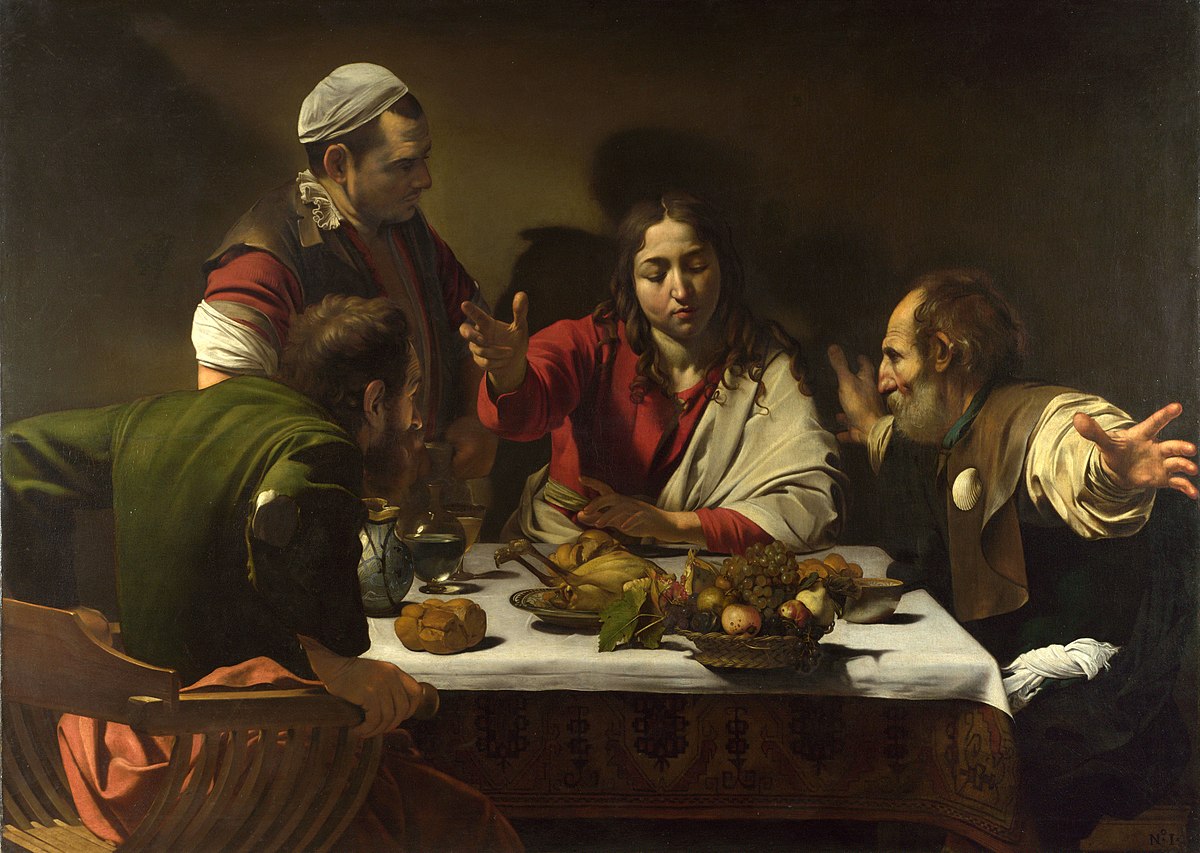
Caravaggio’s The Supper at Emmaus (1601) is a religious history painting, painted at the height of Caravaggio’s fame. There is a lot going on in this painting (it’s one of my favourites, I could seriously talk about it for hours, if anyone wants…), so I am going to concentrate on the still life within it, or try to, at least: the bowl of fruit.
Caravaggio’s composition and verisimilitude are (in my opinion) unmatched. In this painting, depicting the moment that Christ is revealed to the two apostles at the inn in Emmaus, is like a photograph with the intensity of action that is being displayed. Even the way the scene is cropped at ¾ length feels like a zoomed in cinema shot, and we’re just waiting to move onto the next frame.
The way the apostle in the chair is jumping out of his seat, which is disappearing out of the frame, pushing the scene out further than we can see. The way the second apostle is throwing his arms out in a crucifixion position, reaching out of the frame to us the audience. It’s dynamic and active and so deeply contrasted with the peaceful pose of Christ, blessing the bread. It's also contrasted with the rather befuddled innkeeper staring at the scene with no idea what is going on but casting a halo shadow behind Christ’s head.
Caravaggio loved a good contrast, whether it was with light, being a master of chiaroscuro (my favourite word), or action, to highlight the focus point of his scene. In this case, the focus of the painting of unquestionably Christ.
With all this movement (and contrasting stillness) it is easy to overlook the bowl of fruit, perched rather precariously on the edge of the table. Caravaggio was a master of still lives, having made his bread and butter (literally) in his early career churning out still lives for sale. Maybe he just added the fruit to show off. He was a master of realism after all, and even at the time critics (wealthy patrons) commented on how astonishing it was to see a painting of fruit that looked like you could pluck it straight out of the bowl and eat. Even the spots on the apple add to the realism. This fruit exists in our space.
However, nothing about this painting was unplanned. There is only evidence of one change to the composition of this painting (the placement of a knee), which was incredibly rare for the time and meant that Caravaggio knew exactly what he wanted to paint and why. The fruit bowl is of compositional significance.

First of all, the placement of the bowl. As I said earlier, it is a rather precarious placement, hanging over the edge of the table, with a shadow of the protruding base clearly visible. As with other framing devices in this painting, this is designed to draw the viewer in. The bowl is entering the audience’s space and serves as a bridge between us and the scene.
It is slightly funny that the inclusion of the still life aspect of this painting was a point of praise at the time of its painting, because it was also one of the few points of criticism: there is no way all these fruits could have been in season at the same time! Apples and grapes at once? Never! Bellori, a relatively contemporaneous biographer of Caravaggio, highly criticised this supposed goof, as it took away from the immersive realism that the verisimilitude of structure evoked (sorry for all those words – I did Art History at university and haven’t been able to show off in a while).
But, the whole point of this moment caught in Caravaggio’s imagination is that it is timeless. The biblical scene exists in its moment, true, but it also exists throughout time and is relevant throughout the year. Again, it doesn’t matter what time of year it is, the fruit provides a bridge between the past and now. There is a tangible connection between the scene and us, the viewers.
There is a more literal meaning behind the fruit being caught between the image of Christ after the resurrection and us the audience (Caravaggio painted this with a Christian (Catholic) audience in mind) and that is the connection with first fruits. First fruit is a religious offering of harvest produce to a deity. References to First fruits appear throughout the Old Testament – people were instructed to give the first fruits of the harvest to God, to honour that God had made the harvest possible, but also people (people of Israel) were the first fruit devoted to God. This was taken up by early Christian writers who referred to Christ as ‘the first fruit of the dead’.
So, the meaning here is manifold: the fruit, sitting between the audience and Christ serves as an offering to God (Christ); is thanks to God’s abundance and benevolence; is a symbol of Christ himself and his sacrifice on the cross; and is a representation of Christians offering themselves to God (again, it was painted for 17th century Catholics), which is highlighted by the ignorant innkeeper, who should be shrouded in darkness, but is still illuminated by the light being reflected off Christ.
And speaking of light in this painting, there is a lot going on. There is no tangible or singular light source, which is slightly unusual in a Caravaggio painting, and instead light and shadow is used to highlight what Caravaggio wanted it to highlight. This could be seen as a metaphor for ‘the light of recognition’, which is the direct theme of this scene (the apostles recognising Christ after the journey on the road to Emmaus). One of the little easter eggs, for want of a better term and pardon the reference, is that the shadow from the apples and pear leaves hanging above them form a fish (a symbol of Christ) on the tablecloth!
Pub Quiz 5
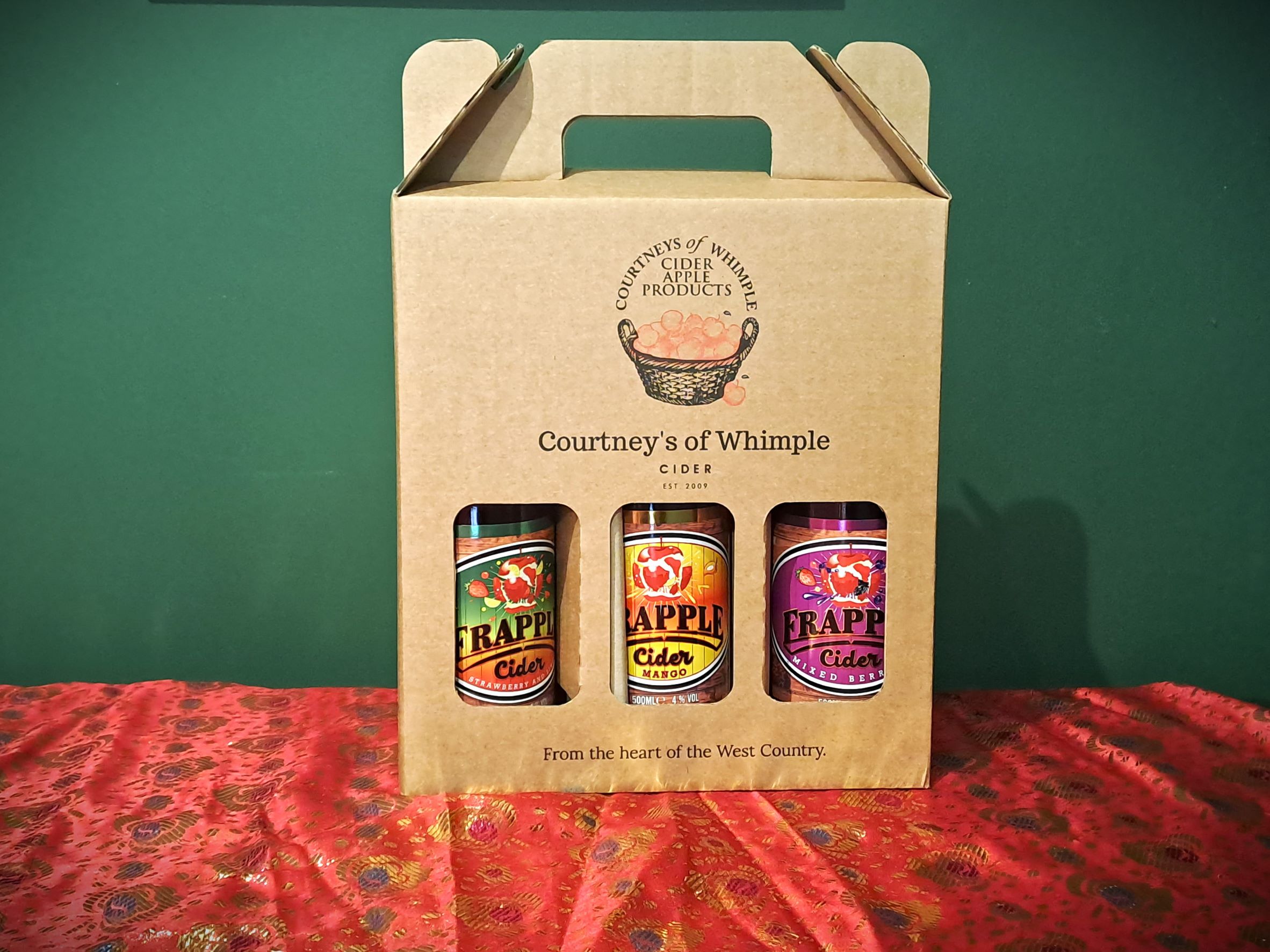
- Where was Apple Pie invented?
- USA
- England
- Holland
- Poland
- Can you drink cider on a gluten free diet?
- Yes
- No
- What does “splice the mainbrace” mean in the context of rum?
- No more for me, thanks
- Shall I open a bottle?
- This is good rum!
- Go on, have another!
- I’m apparently on a nautical theme this week. Why was gin served on English Navy vessels in the 1800s?
- As an alternative to rum
- It helped prevent scurvy
- It was Admiral Nelson’s favourite drink
(Answer: b) England. The first recorded Apple Pie is from 1381 and includes figs, raisins, pears, apples and spices and was served in an inedible pastry known as ‘coffin’ pastry, which meant you could walk around with it and eat the filling as street food.)
(Answer: a) Yes. Proper Cider is always gluten free and is suitable for a gluten free or paleo diet.)
(Answer: d) Go on, have another! Splicing the mainbrace (repairing the ship’s main mast rigging) was a particularly onerous task, so sailors were given an extra dram of rum as a reward whenever they had to do it.)
(Answer: b) It helped prevent scurvy. Tangentially, at least. The English Navy developed the gimlet, a lime and gin cocktail, as a means of getting the sailors to get their daily lime juice (and prevent scurvy) and stop complaints. It worked. It also had the effect of ‘fortifying their spirit’.
Medieval Fruit Pudding
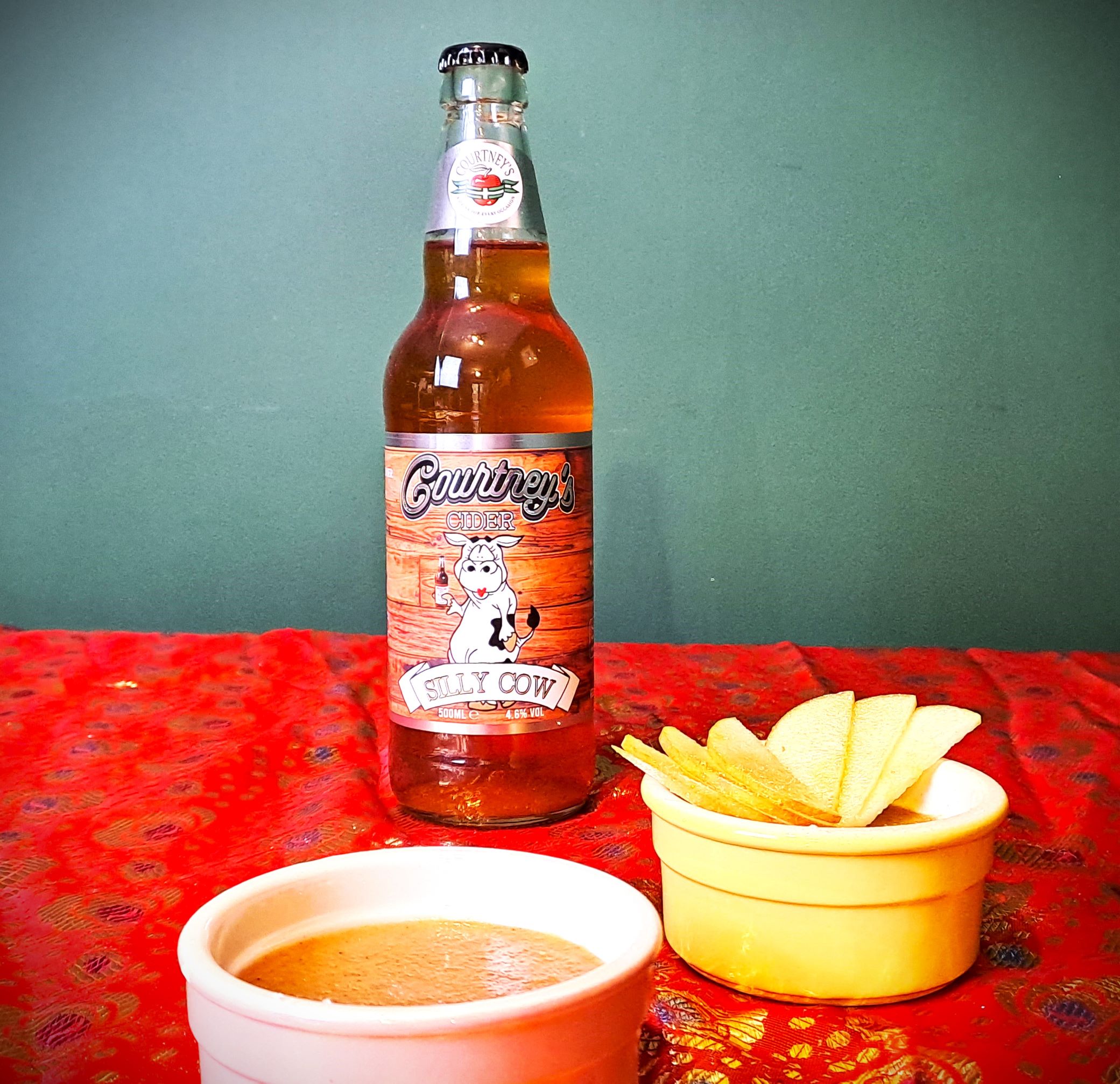
There are very few I crave consistently, but this is one of them. I make it at least once a month. There is no way to describe the texture to you. It’s smooth and ‘creamy’ and kind of like a cross between a jelly and a custard... maybe like a panna cotta…? It’s really nice, but I can’t really think of a modern equivalent.
This recipe is adapted from Chireseye, recipe XVIII in The Forme of Cury, a recipe book from the Court of King Richard II. I’ll leave the original recipe down below for nerd points, but very basically, it’s a cherry and red wine dessert, thickened with breadcrumbs. It’s incredibly easy to make, very quick and very cheap!
It’s one of those desserts that is easy enough that you can whip it up as a mid-week treat, or make for a fancy dinner party and it would be equally appropriate. Seriously, people think you’re really cool when you tell them they’re having a 600+ year old recipe fit for a king.
Onto the adaptation and reasons behind it: I wanted to stick to the original when I first started making the recipe about 5 years ago. The cherry tree in our garden is laden every year with wonderful looking cherries. Wonderful looking, I say? Yes, because every year it keeps getting raided by a greedy little blackbird, who lies in wait and just as they’re ready to pick, he stares me straight in the eye and eats every. last. one. in a single sitting.
Every year.
Other birds try and get a look in and he chases them off. Even magpies!
He sits there for two weeks before and just challenges me to a race, which he knows I have no chance of winning. Mrs Blackbird (they’ve been a couple for years and are a very entertaining duo, who have dates in the dog-rose tree, where they take it in turns swinging the branches for each other) always has to come and find that her partner has eaten so many cherries in one sitting, he turns completely round… and then gets drunk as they all ferment in his gut… then has a hangover for two days afterwards. Have you ever seen a blackbird with a hangover? It’s a mess, every year.
Anyway, with no access to the cherries that are rightfully mine, I went to the shops to get some cherry juice and the result was absolutely spectacular.
But, cherry juice is quite expensive, which I could not justify as a regular occurrence (as this recipe deserves) so I decided to figure out some substitutions. Plum and red wine was very decadent. Orange and white wine went down very well (orange and red wine at Christmas is very good). That was a favourite for a while, but I did want to figure out what to do with apple juice, since apples is what we usually have in.
Please feel free to judge me, but the first time I tried it, I stuck too close to the recipe and did it with white wine. Big mistake. Huge. The entire thing came out too acidic and the flavour of the fruit was lost entirely. It even put me off this dessert for a whole 2 months.
Then I remembered that I am an idiot and made it with cider instead. Gamechanger, obviously. The flavours balance out perfectly and it is now my go to.
Nothing more to say. On to the recipe.
Original recipe
Tak Chiryes at the Fest of Seynt John the Baptist and do away the stonys grynd hem in a morter and after frot hem wel in a seve so that the Jus be wel comyn owt and do than in a pot and do ther'in feyr gres or Boter and bred of wastrel ymyid [1] and of sugur a god party and a porcioun of wyn and wan it is wel ysodyn and ydressyd in Dyschis stik ther'in clowis of Gilofr' and strew ther'on sugur.
Translation
Take Cherries at the time of the Feast of Saint John the Baptist (24 June), stone them, grind them up and sieve them, so that you are just left with the juice and add them to a pot with butter or grease and breadcrumbs and a good amount of sugar and wine and when it is well cooked serve it in dishes and stick on cloves of gillyflowers and sprinkle with sugar.
Modern Adaptation
(makes 4 servings)
- 360ml apple juice
- 120 ml Cider
- 100g (2 slices of bread with the crusts cut off) fine white breadcrumbs (brown bread makes a rougher, chewy texture)
- 1 tbsp brown sugar
- 1 tsp cinnamon
- 2 oz butter
- Melt the butter in a heavy bottomed pan. When it is melted, stir in the cinnamon and sugar. As soon as it is combined, add in the breadcrumbs and stir it all together, like you would the base of a roux.
- Gradually add the juice and cider mix a little at a time, stirring between each mix.
- When all the juice is added, keep boiling on a high heat, stirring occasionally (stir more as it becomes more reduced). Keep boiling until the mixture is reduced and thickened to the point that you can see the bottom for a full second after stirring.
- Pour the mixture into 4 ramekins and leave to cool completely.
- Optional: to decorate, garnish with thinly sliced apple and sprinkle with sugar (and spray with edible gold spray if you’re feeling extra fancy.
Note: The ratios of ingredients are 180ml juice, 60ml alcohol, 1oz butter and 1 slice of bread per 2 servings. The sugar and spices can be added to taste.
Serving Suggestion
Silly Cow Cider
https://courtneys.online/cider...
Turkey Burgers
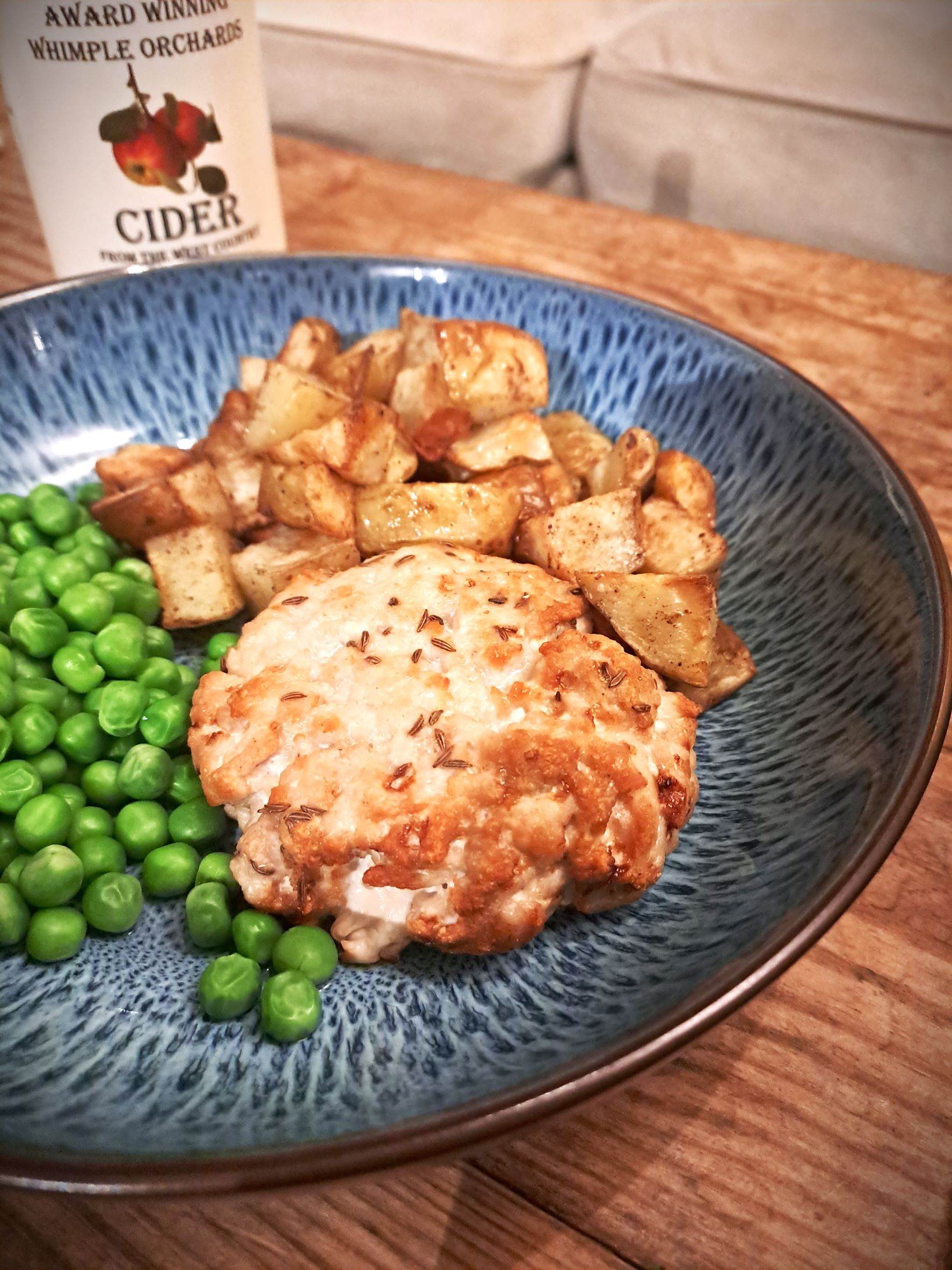
My sister has serious allergies and while we were sorting out what was causing her more extreme problems, turkey became essential to her diet. It’s a low-fat meat, but exceptionally high in protein and takes spices well, which can make a very simple meal feel quite gourmet. This is one of the simple recipes that made my sister’s life easier and has stuck around in our family repertoire, because it honestly tastes fab.
These burgers can be made with your choice of minced meat and spice/herb additions. Grate apple or onion and ground mushrooms will let down the meat content and make your meat go further. The more you add, the more need there will be to add a beaten egg to bind your mixture. The recipe below is the most pared back, basic version of this meal, making it the most allergen friendly, if you don't have a problem with turkey.
These burgers are simple turkey with coriander and carraway. They take very little time to make, and in the air fryer, very little time to cook.
If you don’t have an air fryer, you can cook them in a conventional oven or fry.
Basic recipe: makes 3 medium or 2 larger burgers.
- 500gr turkey mince
- Salt
- 1 tsp ground coriander
- 1 tsp carraway seeds
- 6 medium potatoes
- 1 tbsp oil
- ¼ tsp salt
- ½ tsp cinnamon
- ½ tsp ginger
- ¼ tsp white pepper
- Tip the mince into a bowl. Sprinkle salt over the surface and the coriander and carraway.
- Using your hands, knead the meat, folding in the spices. The mince should come together quite quickly.
- Divide the meat equally into 2 or 3 portions. Roll each portion into a ball and flatten into a burger. At this stage, you can refrigerate the meat for a couple of hours, or longer: this will allow the spices to infuse.
- Pre-heat air fryer to 205°C.
- Dice your potatoes into 2 inch cubes (approximately), toss in oil and spices and put in preheated air fryer for 22 minutes, shaking halfway through. (50 minutes at 180°C in a conventional oven)
- Remove potatoes from the air fryer, put them in a bowl and cover with a tea towel to keep them warm.
- Reduce the head of the air fryer to 180°C and lay the burgers in the air fryer basket (or on a baking sheet) and cook for 15 minutes (30 minutes in a conventional oven).
- If the potatoes need reheating, add them back into the air fryer for a minute at the end.
- Serve with preferred vegetables and apple chutney (not pictured).
Serving suggestion
Whimple Orchards Cider
Sea Fever and a Hot Toddy
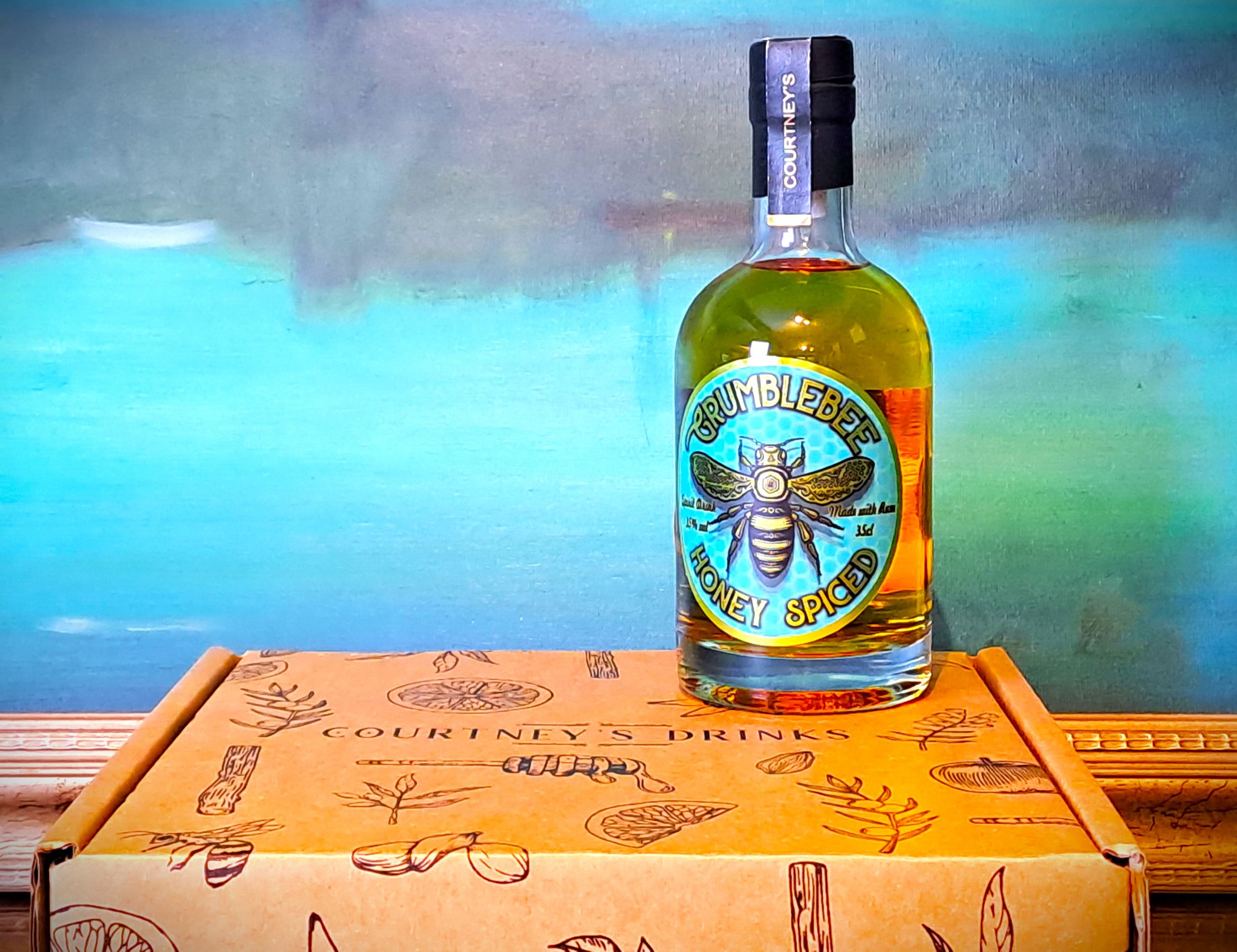
I must go down to the seas again, to the lonely sea and the sky,
And all I ask is a tall ship a star to steer her by;
And the wheel’s kick and the wind’s song and the white sail’s shaking,
And a grey mist on the sea’s face, and a grey dawn breaking.
I must go down to the seas again, for the call of the running tide
Is a wild call and a clear call that may not be denied;
And all I ask is a windy day with the white clouds flying,
And the flung spray and the blown spume, and the sea-gulls’ cry.
I must go down to the seas again, to the vagrant gypsy life,
To the gull’s way and the whale’s way where the wind’s like a whetted knife;
And all I ask is a merry yarn from a laughing fellow-rover,
And quiet sleep and a sweet dream when the long trick’s over.
The wind is raging outside, rain is lashing at the windows, and I could not get this poem out of my head.
There are moments when I listen to the wind and remember when I was eight years old and had a recurring daydream that I was on a Tudor ship (I have no idea where this fantasy came from, but it was very vivid) and would imagine climbing up the rigging, standing in the sails and staring out to the wide sea, hanging off the ropes with careless abandon and my entire body taut with a feeling of adventure. I think it was to do with reading a children’s book about Francis Drake once too often, or my brain finally catching up to the possibilities that life brought and all the directions I could go in the future, both scary and spectacular.
The future is now here, and I am curled up under a blanket, the scent of salt in my mind and a wonder where my wanderlust went. Certainly, as the rain rages outside, I am very happy to be in. I have no desire to be up any rigging and my hot toddy is the closest I am going to get to vagabonding.
But this poem fills my head.
John Masefield’s ode to the sea and all the promises, dangers and potentials it brings and the desire to go out and try to tame the wild ocean.
Tomorrow I will take the dogs on their walk, in the inland whetted knife-like wind heralding the coming of winter, and feel the spray of mist, hear the running tide of the streams, and the chatter of robins in place of seagulls and share many a merry yarn with my intrepid fellow-rover, as we question our choices of pet ownership.
But tonight, just tonight, I will let my mind wonder down to the sea again and the impossible dreams of my eight year old self, sip my hot toddy and imagine my life as a pirate on the waves.
Rum Hot Toddy
(Makes 2 glasses)
- 50ml Grumblebee Honey Spiced Rum https://courtneys.online/rum/g...
- 2tsp runny honey
- 2 cinnamon sticks (optional)
- Juice of ½ lemon (more if necessary)
- 4-6 cloves
- 2 lemon slices
- Stud the lemon slices with the cloves.
- Split the rum and honey between two heat proof glasses and add the cinnamon sticks and lemon slices
- Top up the glasses with boiling water.
- Add lemon juice to taste and serve immediately.
Pub Quiz 4
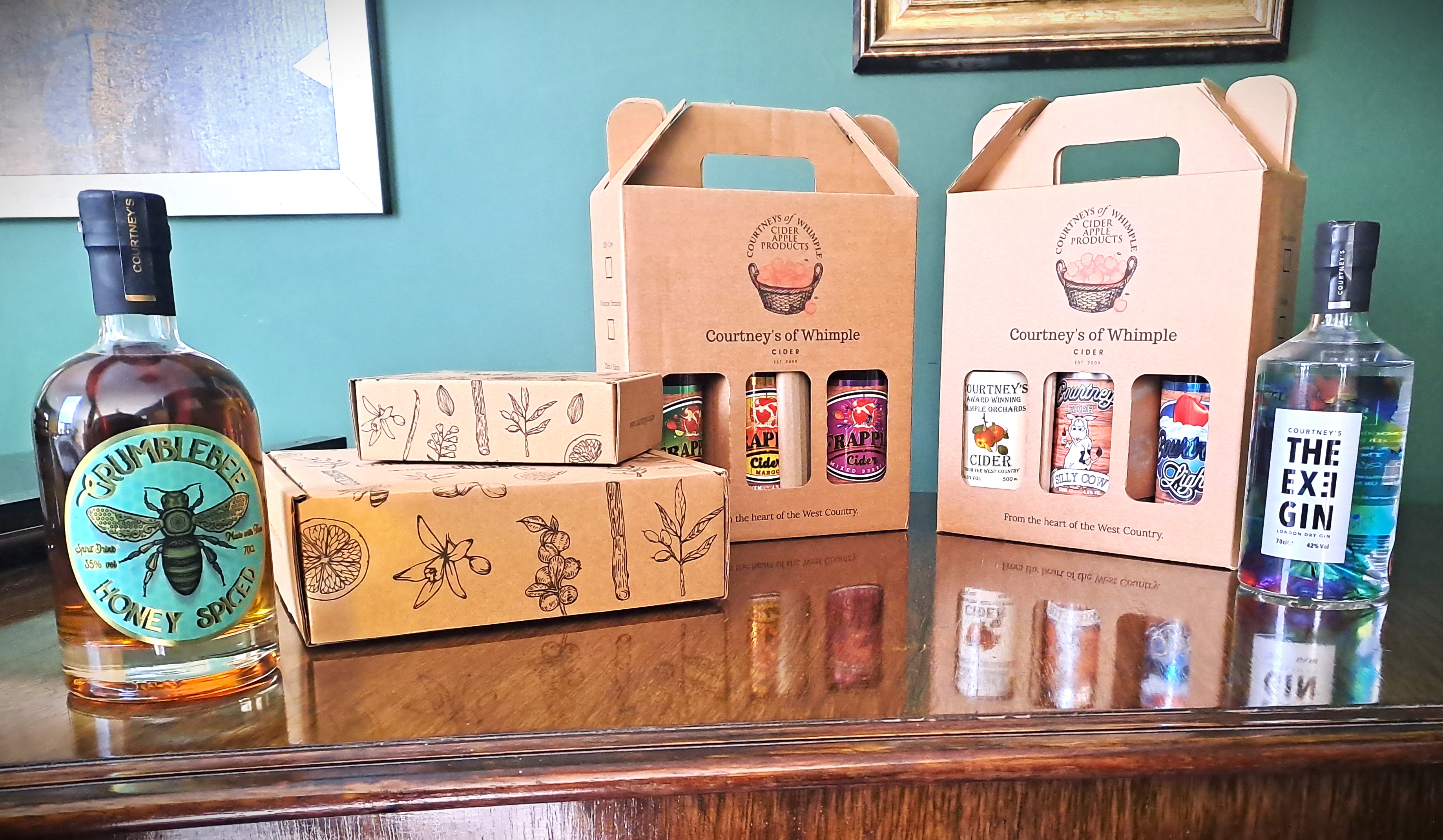
- What is cider classified as in the US?
- An alcoholic beverage (general)
- A white wine
- A beer
- A liquor
- What percentage of apples is air?
- 10%
- 15%
- 20%
- 25%
- What is a juniper berry?
- Berry
- Seed
- Cone
- Fruit
- In what country was rum used as a currency?
- Australia
- Cuba
- India
- Barbados
(Answer: b) a white wine. Apples are to cider what grapes are to wine, so cider is classified as a white wine in America)
(Answer: d) 25%. This is why you can float apple in water!)
(Answer: c) Cone. A juniper ‘berry’ is a seed cone)
(Answer: a) Australia. In the 1790s, Australia was not in the most stable condition as a British Colony and rum was used to trade for goods and services. Rum also served as currency on pirate ships, but that is a possibly a bit less surprising.)








